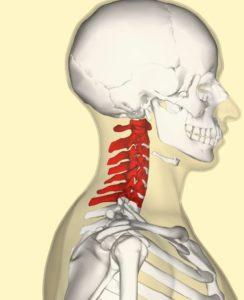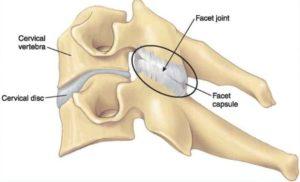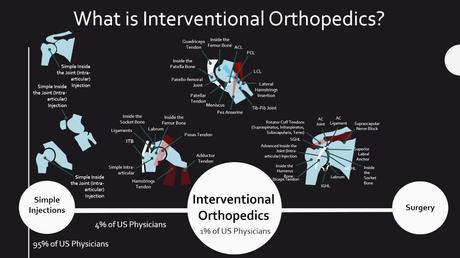What Are Neck Spasms?
Neck spasms are an involuntary tightening of muscles in the neck. They can be abrupt in onset and gradually increase after a given activity. Typically they involve the entire neck but may be more intense on one side leading to an involuntary rotation of the neck. Neck spasm and neck pain are common as 2/3rd’s of all people will experience it at some time (1). It occurs most often during middle age with women being affected more than men (2).
What Does a Neck Spasm Feel Like?
Neck spam is sharp pain typically associated with muscle tightness. The neck muscles may feel hard or knotted to the touch. When severe it may be difficult to bend or rotate the neck due to pain and muscle tightness. The pain may extend down into the shoulders or up into the base of the skull with the onset of a headache. Dizziness can occur if the neck spasm is severe or prolonged.
Causes of Neck Spasm
There are multiple causes of neck spasms that you should be aware of. The major causes include:
Poor posture

Cell phones, tablets, and computers have led to an epidemic in poor posture and spinal misalignment. Posture is key to healthy and happy muscles. Prolonged looking down at digital devices compromises muscles and spinal health oftentimes leading to neck spasm (3).
Emotional Stress
Stress is a normal part of life. Unfortunately for many, they manifest their stress in their upper torso with an elevation of their shoulders, clenching their jaws and rounding of their shoulders. This can result in neck tightness, dysfunction, and neck spams (4).
Dehydration
Dehydration is important to optimal function. Summer heat and increased levels of activity can cause dehydration. These can trigger neck spasms.
Muscle Strain
Muscles provide important support for the neck. Muscles can become strained after repetitive motions, lifting heavy objects, and traumas such as falling. Prolonged periods of computer work, x-box, or cell phone use can injure neck muscles leading to neck spasms (5).
Neck Arthritis

Cervical Spine. Side View
The neck is susceptible to injury from repetitive motions, generalized wear and tear, and trauma. This can lead to neck arthritis with resultant neck spasms
Cervical Disc Injury
The neck is composed of seven building blocks called vertebral bodies. Sandwiched between each of the building blocks is a disc. They are important shock absorbers in the neck. Unfortunately, cervical discs can be injured by trauma, degeneration, infection, and arthritis (6). Injury can result in disc bulge or herniation. Common symptoms of cervical disc injury include pain, limited range of motion, and neck spasm.
Cervical Facet Injury

Cervical Facet Joint. Side View
A facet is a small joint located on the backside of the spine near the center. There is a facet joint on the right and left of each spinal segment. The joint is lined with cartilage just like your knee or hip joint. The facet joint functions to guide and limit movement in the spine. There are facet joints in the neck, thoracic and low back. Facet joints can be injured as a result of trauma, repetitive motion, and instability. When injured, cervical facets can cause neck spasm, neck pain, headaches and:
Cervical Nerve Injury
Nerves exit the spine at each level sending important information to the muscles. Disc bulges, disc herniations, and overgrown cervical facet joints can cause cervical nerve irritation or compression. This, in turn, can result in impaired or reduced nerve signals to the muscle which can cause neck spasms.
Cervical Stenosis
The spinal cord extends from the brain down to the low back. It is enclosed in the spinal canal which contains spinal fluid and the spinal cord. If the spinal canal becomes narrowed the spinal cord can become irritated or compressed. This compression is called stenosis and causes a number of symptoms including neck spasms.
Are Neck Spasms Serious?
Infrequent, mild neck spams that are short-lived are common and typically do not warrant worry or further evaluation. If neck spam is abrupt in onset and associated with sudden high fever, chills, and neck stiffness immediate attention is required. A condition called meningitis, an infection of the brain needs to be evaluated and treated if present.
If your neck spasms are persistent this is an indication that you have an underlying problem that requires attention. What type of doctor should you see?
A doctor who specializes in Interventional Orthopedics is best as these physicians are knowledgeable and skilled in the diagnosis and treatment of muscle, tendon, and spine injuries. In addition, they have the skill and expertise to treat conditions listed above with precise injections of PRP and or stem cells. To be clear they are not orthopedic surgeons. Rather these physicians have advanced training in nonoperative orthopedics. To learn more about Interventional Orthopedics please click on the video below.

How Do you Relieve Neck Spasms?
Most infrequent mild neck spasms are transient and require no treatment. Treatment for persistent neck spasms depends upon the underlying cause. Conservative care when appropriate is always best and a PT or chiropractor can identify and treat poor posture or other soft tissue abnormalities. Meditation, prayer, biofeedback, early morning walks, and therapy may help with mounting emotional stress. Proper hydration is key and monitoring how many ounces of water consumed daily can assist most in avoiding dehydration. Cervical arthritis, disc, nerve, and facet injuries can be treated with precisely guided injections of PRP or stem cells. At the Centeno-Schult Clinic, we are experts in the treatment of neck injuries. In 2005 we were the first clinic in the world to treat spinal conditions with stem cells. To learn more about non-surgical treatment options click on any of the specific conditions listed below.
Cervical Facet Injuries
In Conclusion
Neck spasm is an involuntary tightening of muscles in the neck. It is associated with pain that is sharp in character and can radiate up into the back of the head or down into the shoulder blades. Neck muscles may feel hard or knotted to the touch. If neck spasms are severe it may be difficult to turn your neck. There are 9 major causes of neck spasm which include poor posture, emotional stress, dehydration, muscle strain, neck arthritis, cervical disc injury, cervical facet injury, cervical nerve injury, and cervical stenosis. Persistent neck spasms are an indication that you have an underlying problem that requires attention. A doctor that specializes in Interventional Orthopedics is your best option for evaluation and treatment. For the best clinical results, one must first identify the underlying cause of the neck spasm. Treatment is dependent upon the underlying cause. The Centeno-Schultz Clinic Physicians are experts in the management of neck injuries utilizing the most advanced PRP and stem cell treatments.
If neck spasms are keeping you or your family up at night, please schedule a telemedicine consult. Board-certified, fellowship-trained physicians will review your past medical history, symptoms, and current imaging and provide you with non-surgical treatment options. Your body is telling you that you have a problem. Take the time to address the issue now before it escalates and hijacks your quality of life.
1.Mäkelä M, Heliövaara M, Sievers K, Impivaara O, Knekt P, Aromaa A. Prevalence, determinants, and consequences of chronic neck pain in Finland. Am J Epidemiol. 1991;134(11):1356-1367. doi:10.1093/oxfordjournals.aje.a116038
2.Fejer R, Kyvik KO, Hartvigsen J. The prevalence of neck pain in the world population: a systematic critical review of the literature. Eur Spine J. 2006;15(6):834-848. doi:10.1007/s00586-004-0864-4
3.Kim DH, Kim CJ, Son SM. Neck Pain in Adults with Forward Head Posture: Effects of Craniovertebral Angle and Cervical Range of Motion. Osong Public Health Res Perspect. 2018;9(6):309-313. doi:10.24171/j.phrp.2018.9.6.04
4.Bahrami-Ahmadi A, Mortazavi SA, Soleimani R, Nassiri-Kashani MH. The effect of work- related stress on development of neck and shoulder complaints among nurses in one tertiary hospital in Iran. Med J Islam Repub Iran. 2016;30:471. Published 2016 Dec 28.
5.Binder AI. Neck pain. BMJ Clin Evid. 2008;2008:1103. Published 2008 Aug 4.
6.Peng B, DePalma MJ. Cervical disc degeneration and neck pain. J Pain Res. 2018;11:2853-2857. Published 2018 Nov 14. doi:10.2147/JPR.S180018

